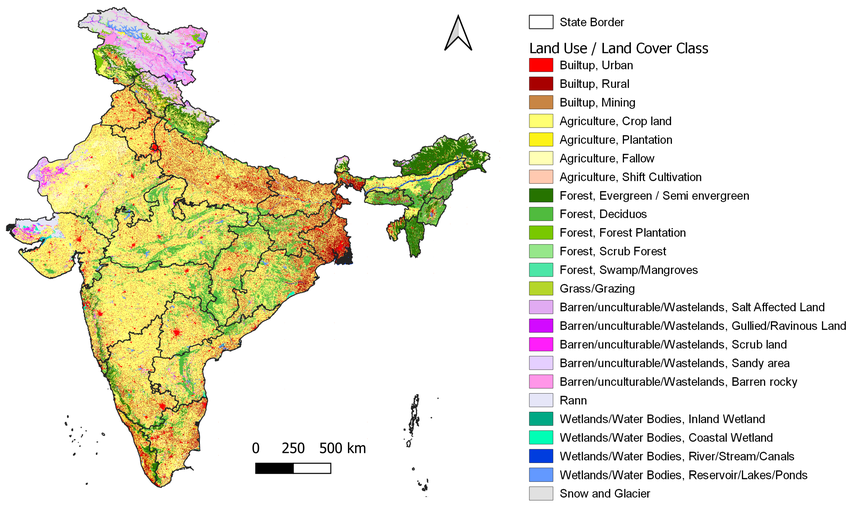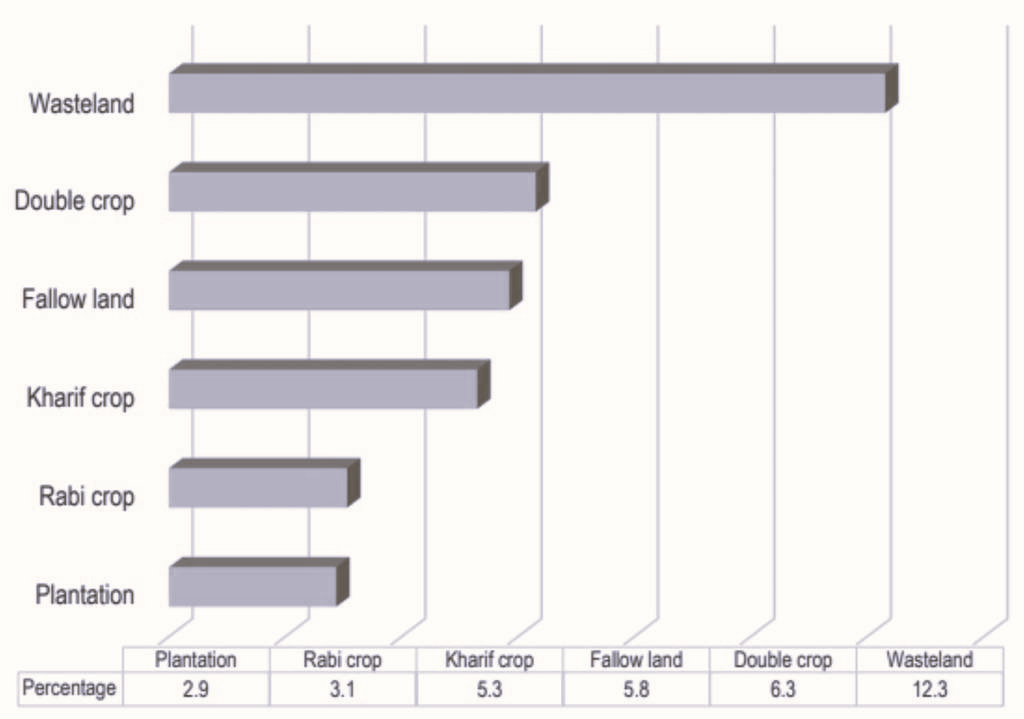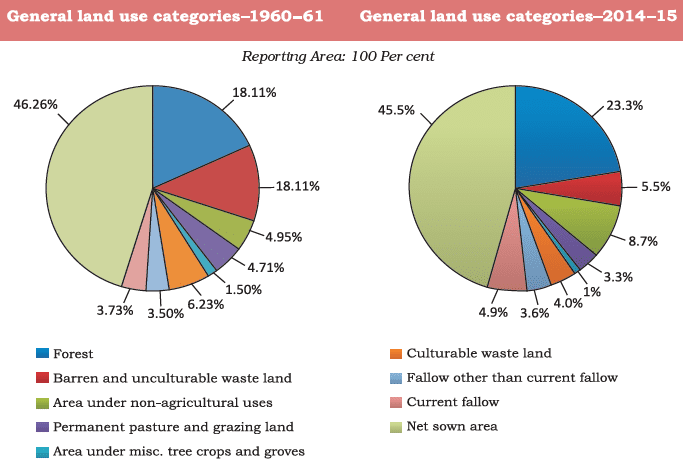Description

Copyright infringement not intended
Picture Courtesy: https://www.researchgate.net/figure/Land-use-land-cover-map-for-India_fig4_350283339
Context: A recent study by the National Remote Sensing Centre (NRSC) reveals a substantial increase in built-up areas, signifying a rapid urbanisation and infrastructure boom over the past 17 years (2005-2023).
Key Highlights of the Study
- Built-Up Area Growth: India's built-up area expanded by approximately 2.5 million hectares from 2005-06 to 2022-23, representing a 31% overall increase. This growth highlights rapid urbanisation and infrastructure development.
- Contribution of Different Land Covers: The expansion of built-up areas has largely been at the expense of agricultural land covers, with notable contributions from wasteland and various types of agricultural lands (double/triple/annual crop, kharif crop, rabi crop, plantation, fallow land).
- Impact on Agriculture: The diversion of agricultural land for urban development raises concerns about the loss of fertile land and its impact on farmers' livelihoods. Recent protests by farmers against inadequate compensation for land acquisition highlight this issue.
- Infrastructure Development: The increase in capital expenditures by states and union territories, as well as the growth of national highways and other infrastructure projects, reflects a broader trend of economic development and connectivity initiatives.
- Challenges of Sustainable Development: The findings from the study emphasise the need for informed decision-making in development planning to balance infrastructure expansion with sustainable land use.
|
Remote sensing technology, as employed by the NRSC, plays a crucial role in monitoring land use changes over time, providing essential data for evidence-based policy formulation and environmental management.
|
Contribution of different land covers to built-up extents

Challenges Associated with Expansion
- Agricultural Land Conversion: A considerable proportion of this expansion involves the conversion of agricultural land, impacting food security and rural livelihoods. Loss of fertile land can affect agricultural productivity and disrupt traditional farming communities.
- Environmental Impact: Urbanisation can lead to environmental degradation, including increased pollution, deforestation, and habitat loss. The loss of green spaces and natural ecosystems can exacerbate climate change and affect biodiversity.
- Infrastructure Strain: Rapid urban expansion can strain existing infrastructure, leading to issues such as traffic congestion, inadequate housing, and increased demand for water and energy resources. This can adversely impact the quality of life in urban areas.

Steps to Address Challenges
- Strategic Land-Use Planning: Governments need to adopt comprehensive land-use policies that balance urban expansion with the preservation of agricultural land and natural ecosystems. This includes zoning regulations, green belts, and protected areas.
- Compensation and Resettlement: Adequate compensation and resettlement policies are essential for affected farmers and communities. Fair compensation should be provided for acquired lands, and efforts should be made to enhance alternative livelihood opportunities.
- Investment in Green Infrastructure: Prioritise investments in green infrastructure, including parks, gardens, and urban forests, to enhance environmental sustainability and improve urban quality of life.
- Promotion of Sustainable Transportation: Emphasise public transportation, cycling lanes, and pedestrian-friendly infrastructure to reduce reliance on private vehicles and promote cleaner modes of transportation.
Conclusion
- Policymakers must prioritise sustainable development practices that integrate economic growth with environmental and social considerations. The NRSC's land-use and land-cover atlas provide valuable insights into land resources, trends, and patterns, enabling evidence-based decision-making for future development projects.
Source:
Down to Earth
|
PRACTICE QUESTION
Q. India's agricultural land is being converted to built-up areas at a significant rate. How can India ensure long-term food security considering this changing land-use pattern and a growing population? Can technology like vertical farming or improved agricultural practices bridge the potential gap in food production?
|


















